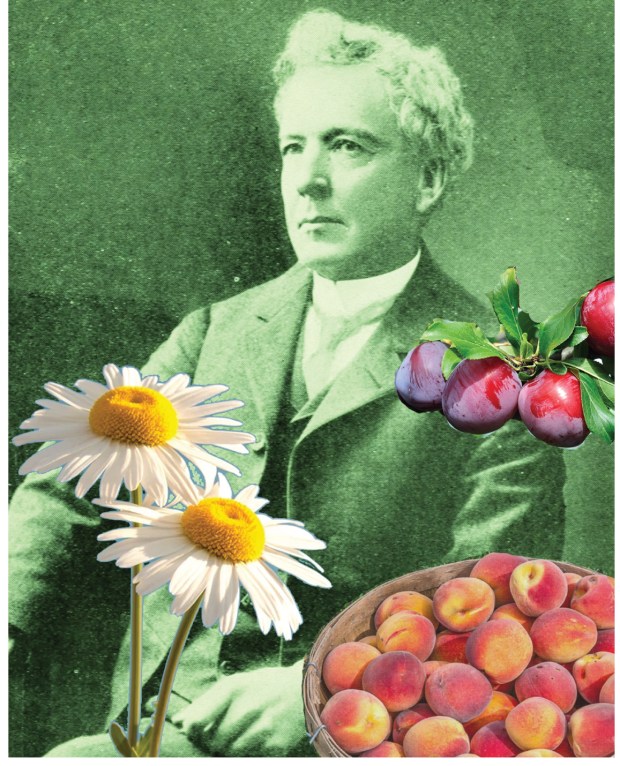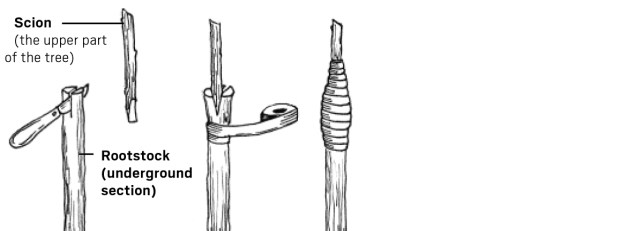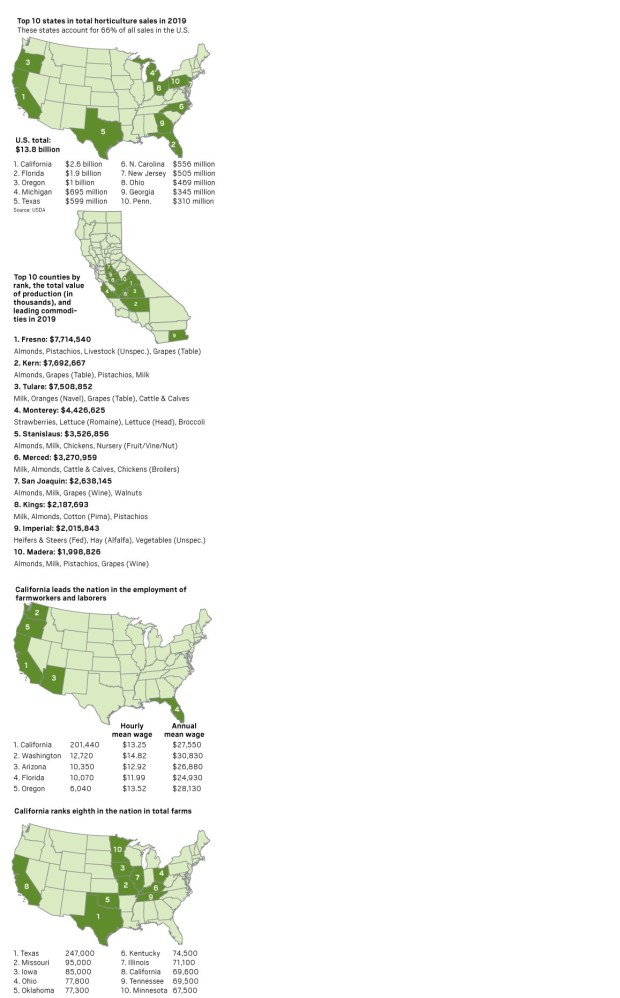Arbor Day is observed by most Americans as a day to plant a tree in late April. But in California we celebrate early.
California’s Arbor Day is recognized on March 7, which is horticulturalist Luther Burbank’s birthday. Burbank developed more than 800 varieties of fruits, flowers and vegetables over his career in California.
After he grew 20,000 little prune trees, or seedlings, in only nine months, Californian farmers began calling him the “Plant Wizard.”
Burbank had famous friends in high places such as Thomas Edison and Edsel Ford, but you’ve probably only know Burbank as a city in L.A. County (which is not his namesake).
His work helped California become a leading supplier of the the nation’s food and you could say he saved Ireland’s economy. If you’ve never heard of Luther Burbank, you’ve probably seen, smelled or tasted some of his work. French fries and daisies to name a couple.
Burbank was born on March 7, 1849, in Lancaster, Mass. He was an avid reader. At the age of 19, he was profoundly impressed by Charles Darwin’s theories of evolution. At 21, Burbank purchased a 17-acre plot of land that he farmed and ran experiments on. He moved to California in 1875, settled in Santa Rosa County and went on to become one of history’s most inventive and productive breeders of plants.
Conducting as many as 3,000 experiments at once, Burbank crossbred foreign and native species of plants, cultivated the resultant seedlings, and used grafting to arrive at new and better breeds.
Burbank developed more than 100 varieties of stone fruit, including the Santa Rosa plum, freestone peach and plumcot. He spent 20 years trying to develop a spineless cactus that cattle could eat, but was never successful.
Amazing daisy
When you see big white, long-stemmed daises in stores this month you can give credit to Luther Burbank. The Shasta daisy is a quadruple hybrid he spent years perfecting.
He began in 1884 with seeds of a New England variety called oxeye daisy (Leucanthemum vulgare), then pollinated them with pollen from the English field daisy and planted those seedlings in rows 700 feet long. The new daisies flowered in their first year, bloomed earlier and had more numerous flowers. But Burbank was still not satisfied with their color.
He continued to pollinate with Portuguese field daisy and then again with a Japanese daisy. The new flowers were introduced in 1901 as a mixed selection, the Shasta daisy hybrids.
 Mr. potato maker
Mr. potato maker
The Irish also have a lot to thank Luther Burbank for. Early in his career, one of his greatest successes was the Russet Burbank potato, better known as the “Idaho” potato. Burbank’s larger, more disease tolerant version helped Ireland recover from the devastating potato blight of 1840 to 1860.
The large, hardy potato is still a staple of American agriculture.
Burbank’s book, “How Plants Are Treated to Work for Man” (1921), largely inspired the Plant Patent Act, which made new varieties of plants patentable for the first time.
The Plant Patent Act was made law in 1930, four years after Burbank’s death, but he received 16 plant patents posthumously.
Grafting basics
Grafting is connecting two pieces of live plant tissue in a way that allows them to unite and grow as one plant.
There are many different grafting methods. On woody plants, grafting involves carefully matching up the lateral meristems of two different plants, and securing the two pieces so they eventually grow together.
Most apple trees are actually a combination of two trees. The rootstock might be particularly resistant to soil-borne disease or insects. The scion is usually chosen for its fruit quality. Rose bushes are often grafted onto rootstocks.

Cal Ag
California’s agricultural output for 2019 was more than $50 billion in cash receipts, which was slightly higher than the previous year’s output. Exports totaled approximately $21.7 billion, which represents a 3.4% increase from 2018’s exports.
California remained the leading state in cash farm receipts in 2019, with combined commodities representing more than 13% of the U.S. total. California’s leading crops remained fruits, nuts and vegetables.
California accounts for 40% of all organic production in the U.S. In 2019, sales of organic products in California totaled more than $10.4 billion, which represents an increase of 3.5% from 2018.
Flower power
California’s floriculture crop ranked second in the nation with crops valued at $1.02 billion in sales, comprising 23% of the U.S. total wholesale value.
California was the leading state in cut flower production, accounting for about 74% of the total U.S. cut flower wholesale value.

Sources: Luther Burbank Home & Gardens, lutherburbank.org, National Inventors Hall of Fame, USDA, California Department of Agriculture
Photos from Wikimedia Commons
